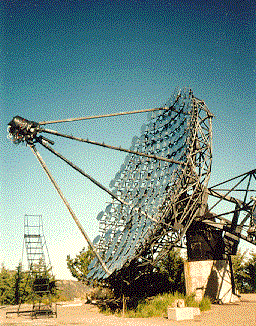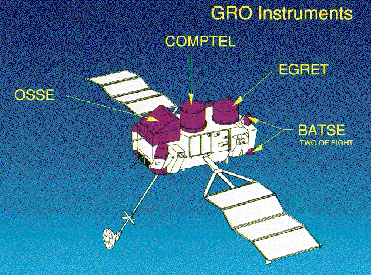| The Atmospheric Cerenkov Technique (ACT)At energies above those obtainable by satellites (up to several EeV), the best method for observing gamma rays is by utilizing ground based telescopes which employ ACT. By observing the Cerenkov radiation produced by a gamma ray shower, ground based telescopes are able to achieve a very high resolution while eliminated most of the cosmic ray noise. Foremost among the ground based telescopes is the
Whipple 10 m reflector. By employing the imaging technique which they pioneered, the Whipple collaboration has made the initial observation of several AGNs which have, when combined with information from other telescopes observing different parts of the electro-magnetic spectrum, been crucial in the formation of many of the current theories of galaxy formation. The Whipple is able to observe energies ranging from 300 GeV to several TeV. |  |


